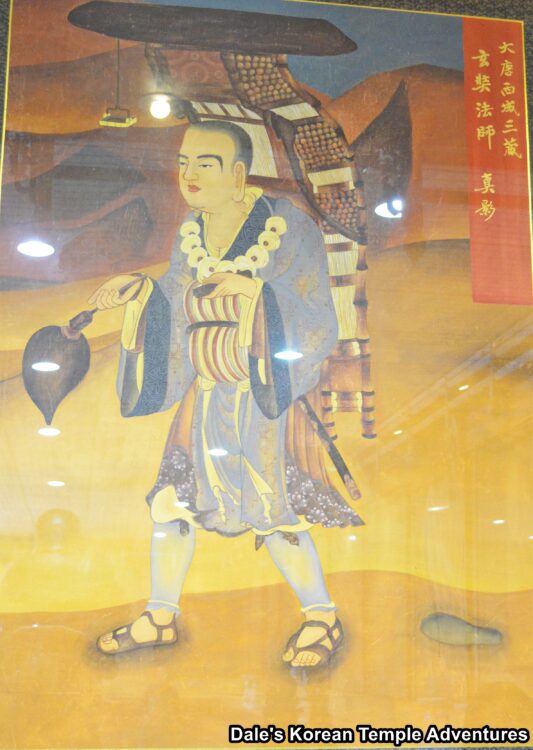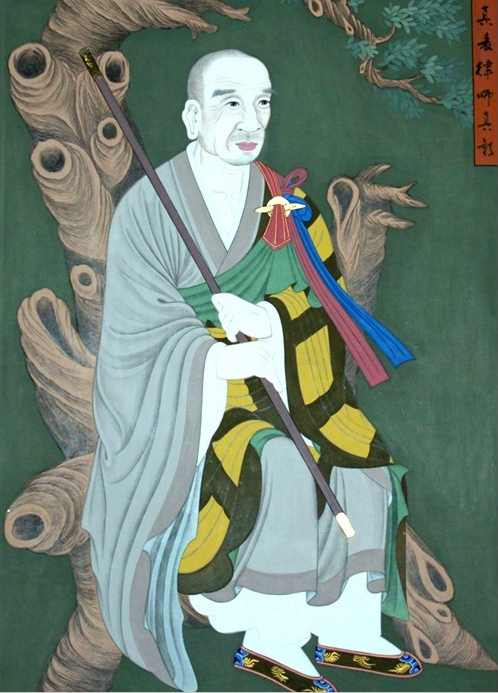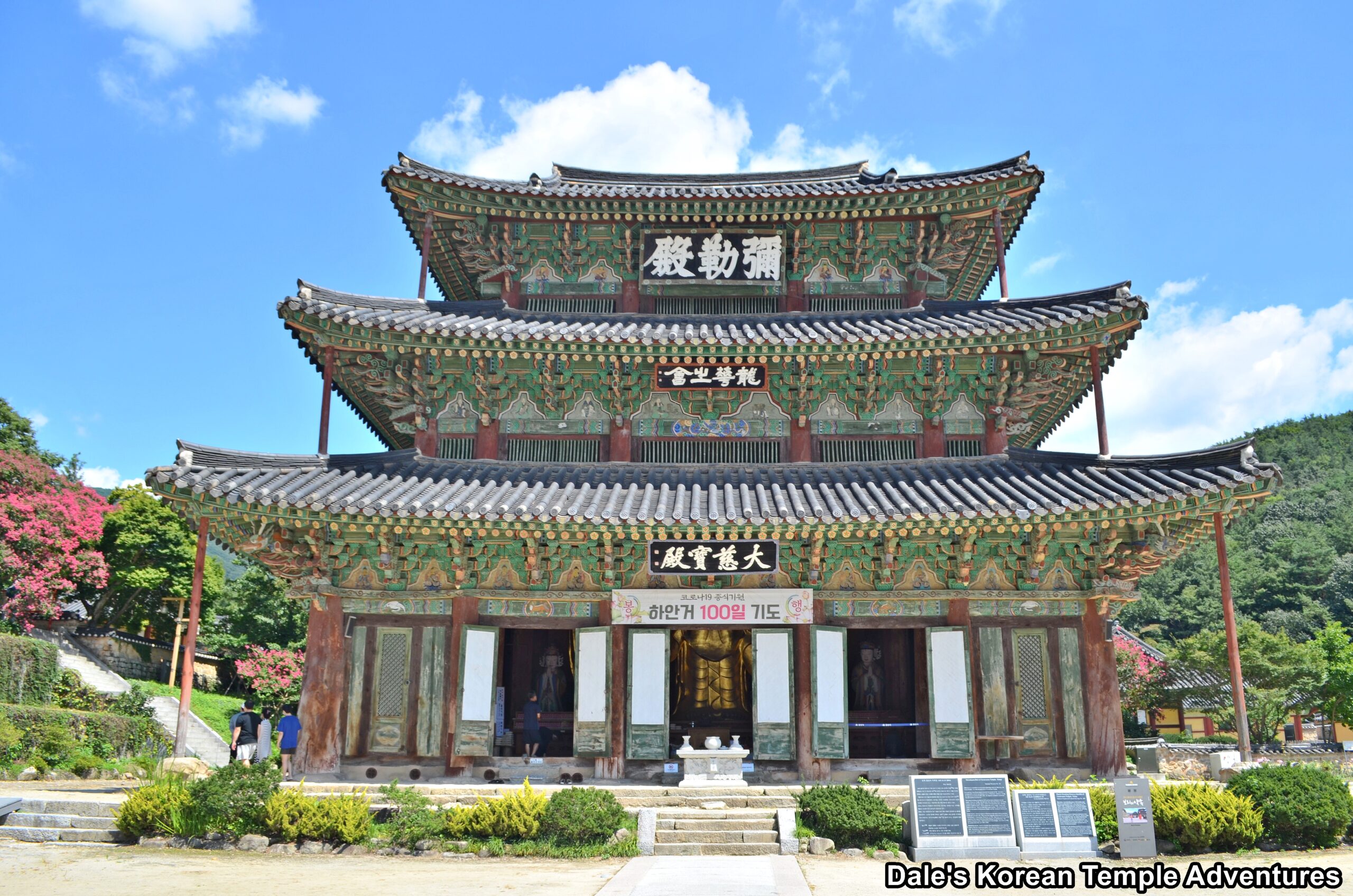Yuga-jong – Consciouness-Only Sect: 육아종

There are two primary texts that the Yuga-jong sect follows. They are the Yogacarabhumi-sastra (Treatise on the Stages of the Yoga Masters) and the Vijnaptimatratasiddhi (Treatise on Consciousness Only). This sect is also known as Yusik-jong – 유식종, or the Consciousness-Only sect in English. The reason for this is that in yoga, and in the mind, there are manifestations of various dharmas.
Another name this sect goes by is Beopsang – 법상종, which focuses on the Dharma Laksana. The founder of this sect in China was the Dharma Master Xuanzang (602-644 A.D.), or Hyeonjang in Korean, who started to teach this doctrine at the Cien Temple. That’s why this sect is called the Cien sect.
The word Lakshana is a combination of two Sanskrit words. Those words are lakshaya and kshana. And these words mean “indication” or “symptoms.” The reason that this is important is that the smallest particle of time, or kshana, allows for the entire universe to undergo a change. So each moment, or particle, of time is a product of that change. Importantly, time doesn’t have a separate existence. You can see why this would be important to those focused on mindfulness.

In Korea, the greatest early proponent of these teachings was the monk Jinpyo (fl. 8th century). The Yuga-jong sect reveres Mireuk-bul (The Future Buddha) as their main Buddha of worship. They also respect the Chinese master Xuanzan and Kuiji (632-682 A.D.). Together with the six Korean patriarchs, they form the eight patriarchs of this sect. Rather interestingly, it wasn’t until their deaths that the six Korean patriarchs were celebrated.
So excluding Jinpyo, who are the five other Korean patriarchs? Well, we have some assistance from historical writing like the Epigraph of Royal Preceptor Hyedeok of Geumsansa, (Geumsansa Hyedeok wangsa-bi), when it states, “Master Wonhyo first opened the Way, and Taehyeon followed in his footsteps, the lamp was transmitted ablaze from one generation to the other, it was inherited and flourished.” So with this being said, we can include both Wonhyo and Taehyeon in the group of six Korean patriarchs. Additionally, and found in the Song gaoseng zhuan, it reports about the biography of the Silla monk named Sungyeong, when it states, “He inherited from Xuanzang the transmission of the true Consciousness-only doctrine of syllogisms, and therefore elaborated the theory of determining contradictory and non-deductive statements.” This is furthered by the Shimen Zijing-lu, when it states, “When Sungyeong was in his home country [Silla], he wrote many books, some of which were circulated in China, and the faith they deal with is the teaching of the Faxiang school of the Greater Vehicle.” So from this we can infer that Sungyeong was another of the six Korean patriarchs. Concerning the two final Korean patriarchs, there are no records that can be relied upon. However, it is believed by some that there are three possible candidates for the two remaining spots. These master monks are Woncheuk, Gyeongheung, and Dojeung, who all greatly expanded and expounded the Yuga-jong sect teachings. However, it’s only in Jinpyo that the teachings are transmitted in a direct line; and thus, become a sect from one master to the next.
So who was Jinpyo? Jinpyo was born in Wansan (present-day Jeonju), and was raised in Mangyeong-hyeong (present-day Gimje). At the age of twelve, Jinpyo became a monk at Geumsansa Temple under the monk Sungje. Then, at the age of twenty-seven, he went to Seongye (present-day Buan) to live at a hermitage. There he meditated for some twenty-one days in front of a Mireuk-bul (Future Buddha) statue. At this time, Jinpyo had visions of Mireuk-bul where he preached the precepts to the monk. Jinpyo also received from Mireuk-bul the “Sutra on the Divining the Requital of Good and Evil Actions” in two books and 189 bamboo sticks. Later, Jinpyo went to Geumsansa Temple, where a statue of Mireuk-bul, standing sixteen feet tall, was made from metal. The temple then became the main site for the Yuga-jong sect. Not only that, but the precepts were observed here, as well. Also, at this time, divination ceremonies were held.
Jinpyo had numerous disciples including Yeongsim, who was active on Mt. Songnisan. And Yeongsim’s disciple was the Royal Preceptor Simji, who propagated the Yuga-jong sect at Donghwasa Temple in Daegu. From this point, the Yuga-jong sect prospered.
